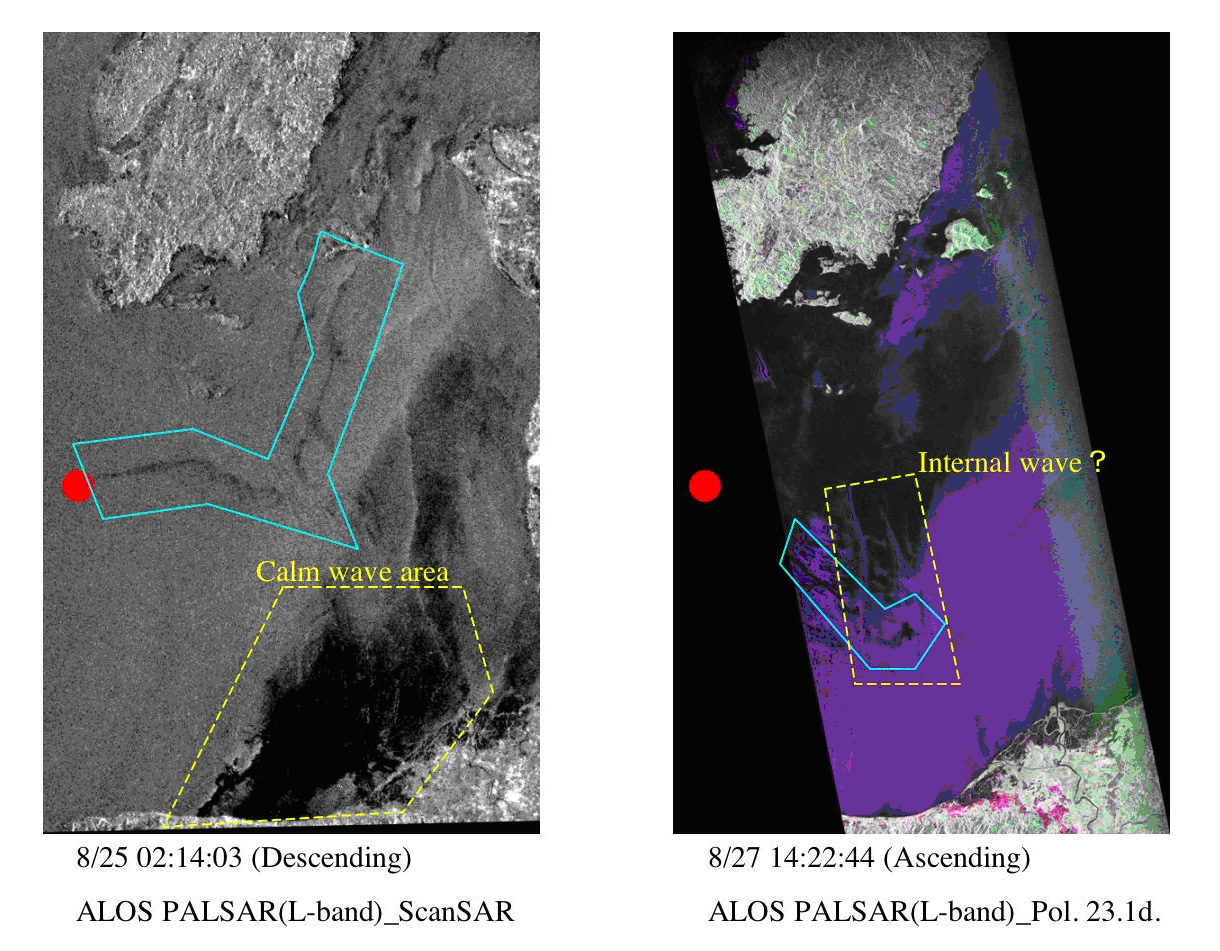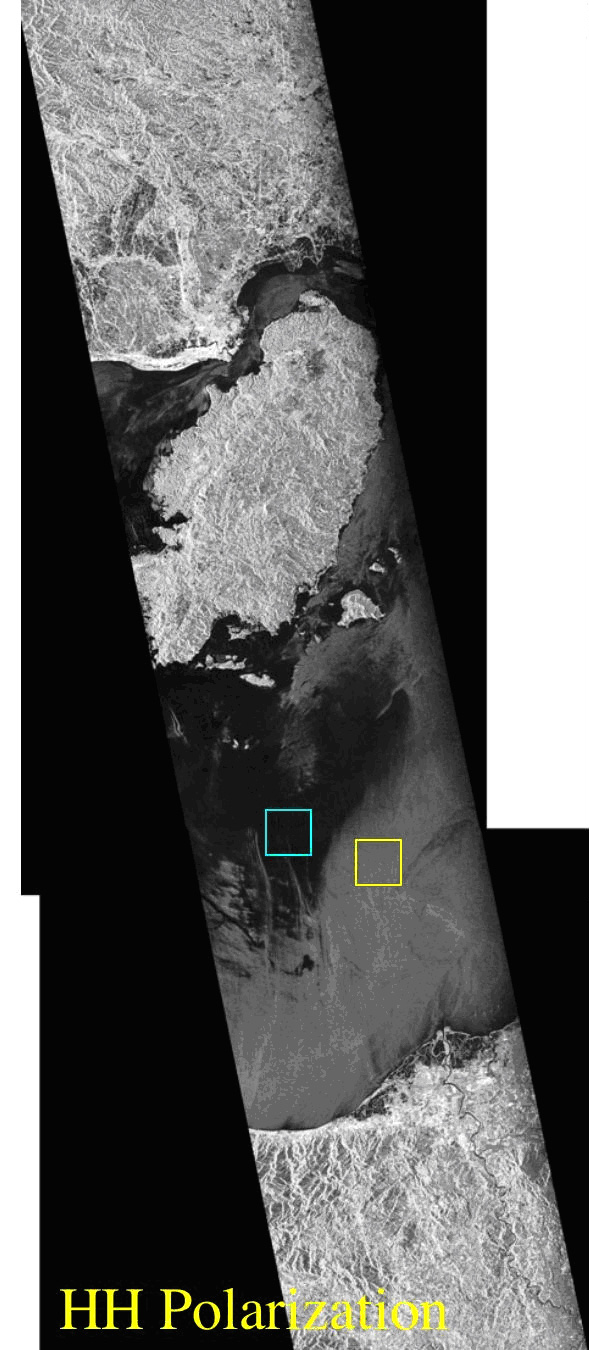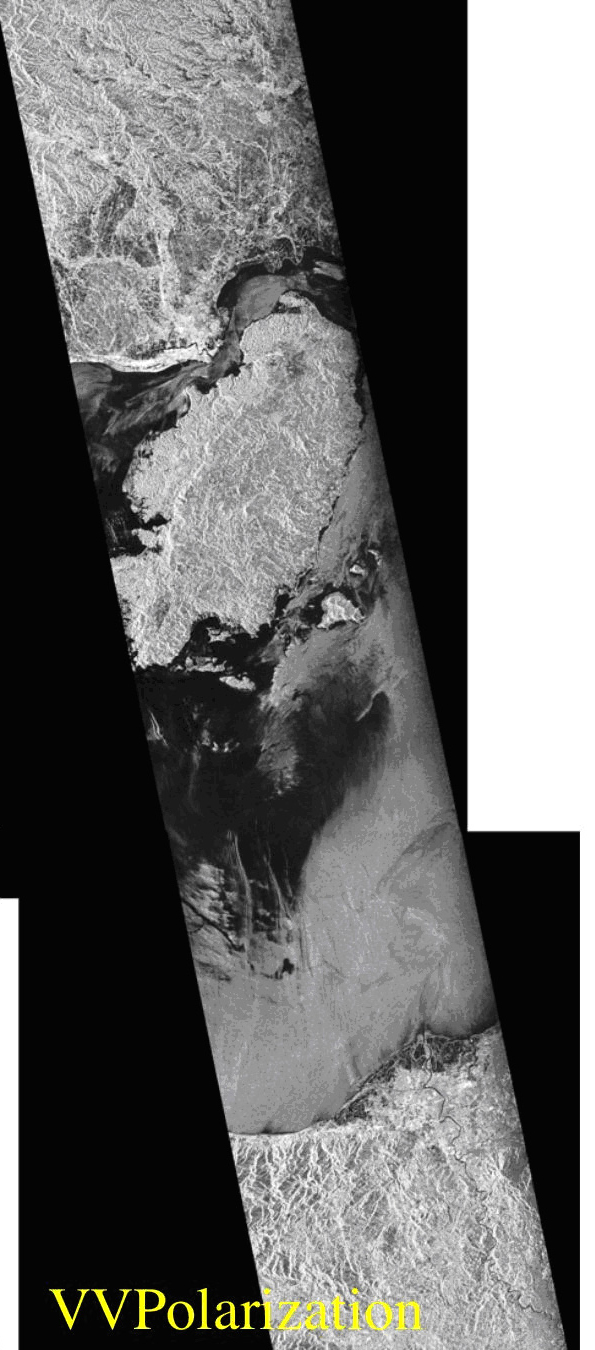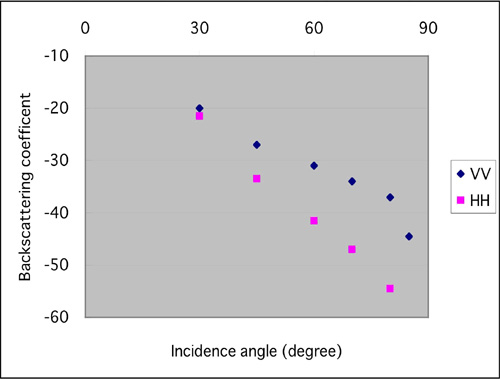Image Library
Detection of oil spill caused by a sunken tanker by using PALSAR
Fig. 2-left presents a decomposition image made from the polarimetry data. Intensity of four polarizations (HH, HV, VH, VV) and phase information are used to determine the scattering mechanism. Red indicates double-bounce scattering from ground-building, ground-tree trunk, and so on. Green represents volume scattering, in which multiple radar reflections occur in the tree canopy. Blue represents surface scattering, in which radar is scattered by rough surfaces, such as ground and sea waves. In the decomposition image, forest areas appear green, buildings and paddy areas appear red, and bare soil and sea waves appear blue. The oil spill on the sea appears black because the oil suppresses the waves, making the surface smoother.
Figure 2 middle and right are intensity images taken with HH and VV polarization and depict the same pattern. This indicates that the scattering process on the sea is the same. To determine the best mode to detect the oil spill, intensity ratios between dark (blue square) and bright (yellow square) sea areas are examined in the two polarization images. The ratio is 3.0 for the HH image and 4.2 for the VV image, indicating a clear contrast. This means that the VV image is better for detecting the oil spill.*1:A wave made between two different sea layers with different densities. Typical wave height is 10 to 100m.
*2:J.C. Daley, W.T. Davis, and N.E. Mills, "Radar Sea Return in High Sea States," Naval Research Laboratory Report 7142, September 25, 1970.




